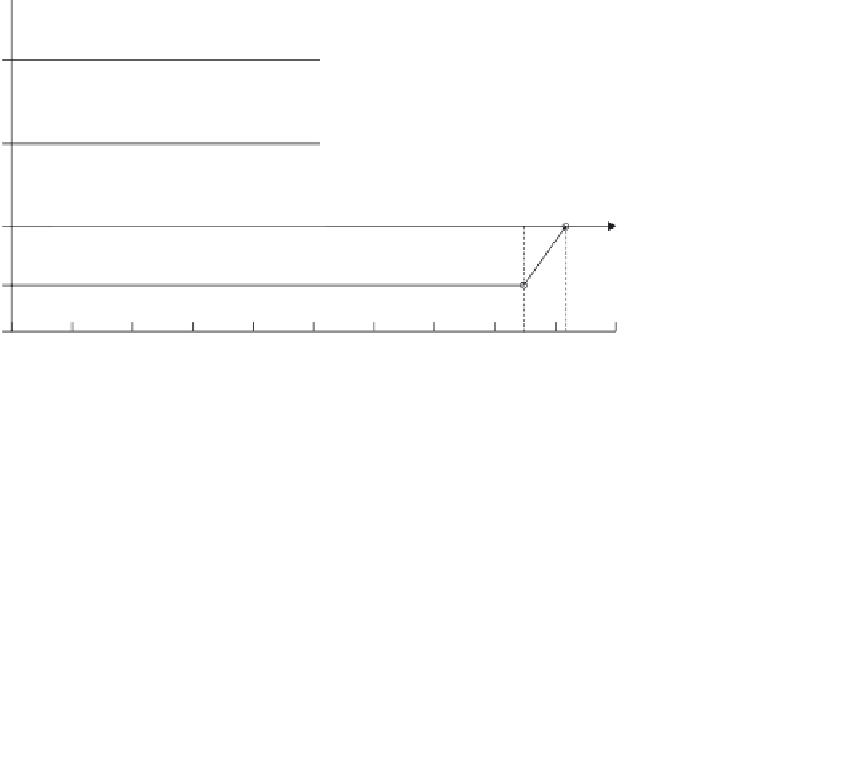Environmental Engineering Reference
In-Depth Information
to public. This means the private company should start with a rate low
enough to be acceptable, with subsidies from government to comply, with
progressive increase in rates (with lesser subsidies) over a period of years.
Appropriate Water Quality Standards
Maintaining a measurable chlorine residual in the delivered tap water is the
water quality parameter that should be given greatest attention in designing and
operating DC/UWWSs. It is illustrated by Figure 4.5, taken from a report of the
Asian Development Bank published in 1988
112
.
Water and Sewer Pipes in Same Trench
Situation in ICs
Many U.S. state health authorities have persistently
prohibited placing water supply and sewers in the same trench, setting limits
requiring specified distance between the two types of conduits. However, there
Abbreviations
CR
=
Chlorine residual
Effluent
Rapid sand filtration
Eff
=
=
RSE
Rapid Sand Filtration with Post Chlorination : Eff total coliforms less than 1/100 ml Eff CR not less than 0.1 mg/1
1
Chlorination only : Eff total coliforms less than 1/100 ml Eff CR not less than 0.1 mg/1
0
Activated Carbon Tower Removals (or equivalent) for reduction of THMs
2
Rapid Sand Filtration including Post Chlorination : Eff total coliforms less than 1/100 ml Eff CR not less
than 0.1 mg/1
1
0
1900
1910
1920
1930
1940
1950
1960
1970
1980
1990
2000
Year
NOTES
U.S. Practices
:
•
Turbid raw wate
r: "Zero health risk" syndrome will require activated carbon tower or equivalent treatment to remove THMs and
other toxic substances.
Clear raw wate
rs (initial turbidity <10 units): whereas previously only chlorination required, now full-scale rapid sand filtration
with post chlorination to be required.
•
•
In addition to chlorination of filter effluent, it has been necessary in states like California to maintain a positive chlorine residual in
the water supply distribution system, which sometimes requires rechlorinaization within the distribution system. Generally, DCs have
no such requirement, and often there is no residual in the distribution system, but the DCs really need this (far more than ICs) because
of leaky distribution systems, fluctuating pressures, and lack of sanitation.
RecommendationS for DC
s:
•
Clear water
s: Chlorination only.
RSF/Chlorination only, no activated carbon treatment. Maintain positive chlorine residual in distribution system.
Turbid wate
r:
Source: ADB
112
•
FIGURE 4.5
Schematic drawing showing drinking water standards for U.S. chlorine
residuals, coliforms, and THM toxicity parameters with recommendations for DCs.











